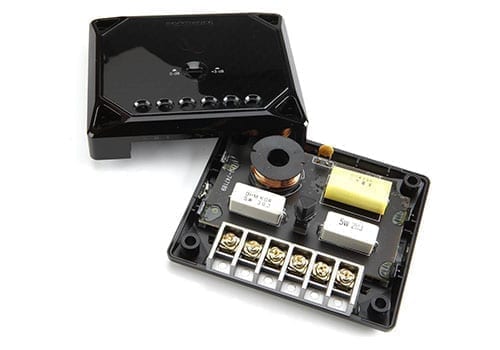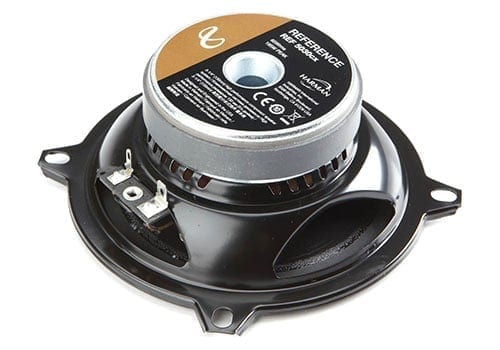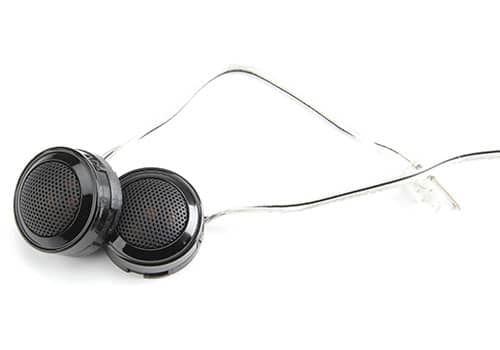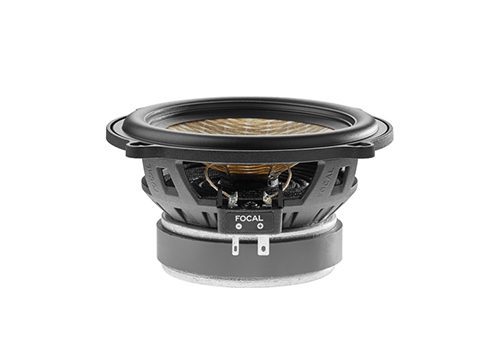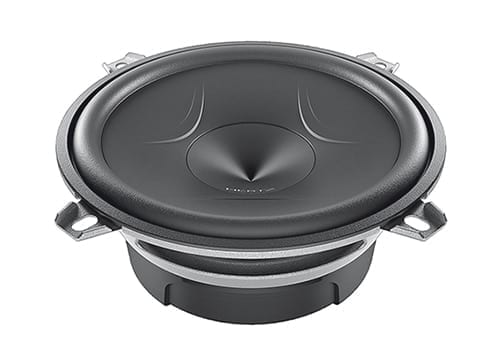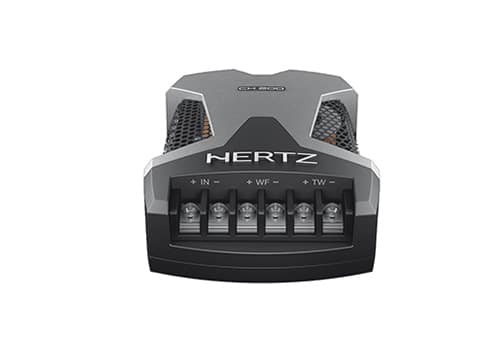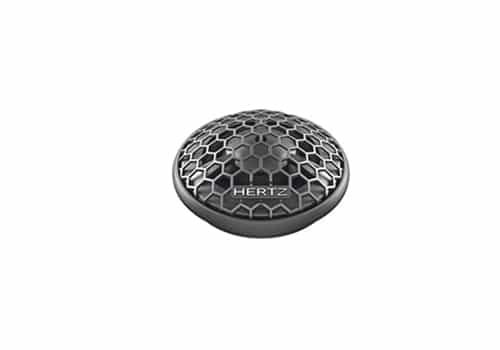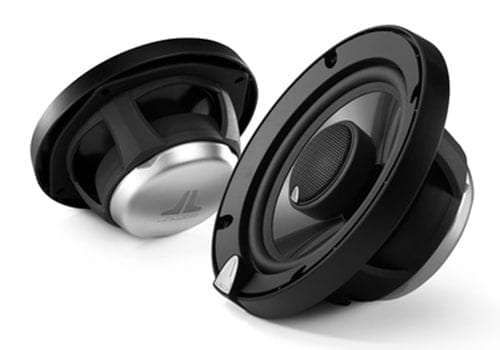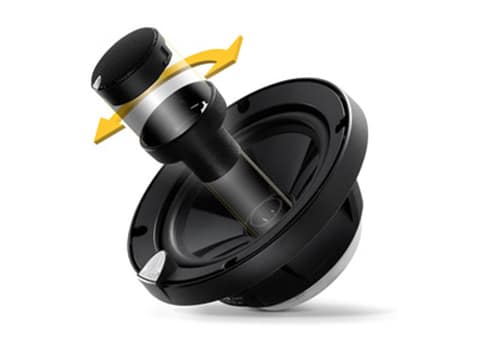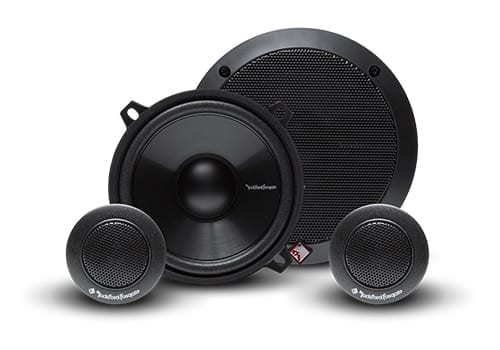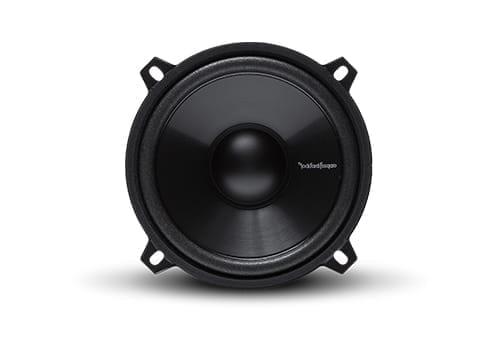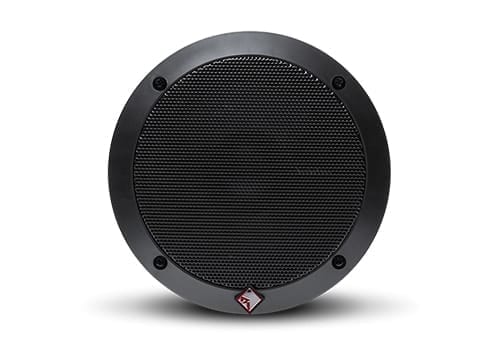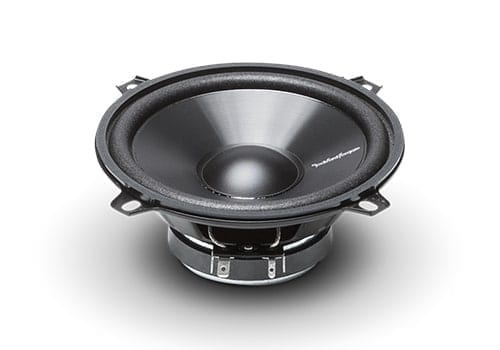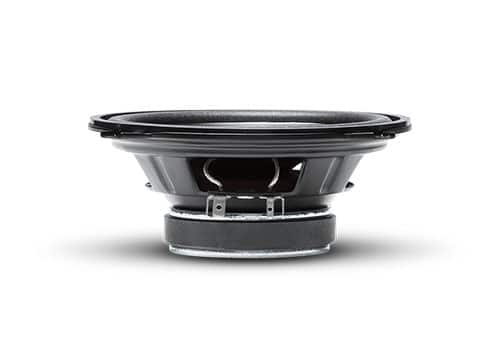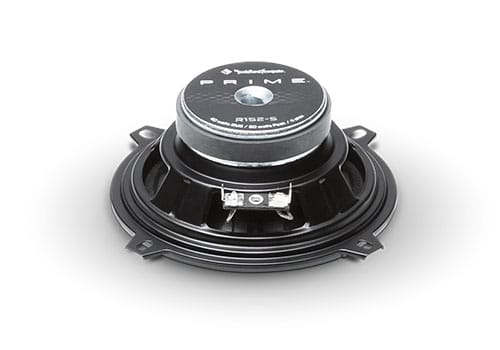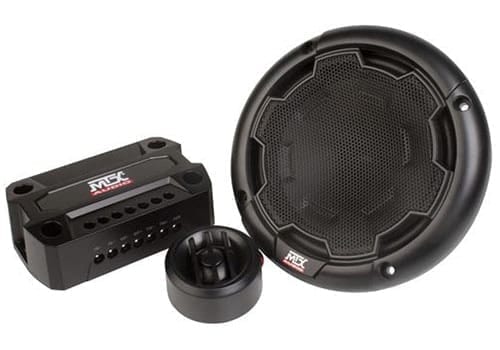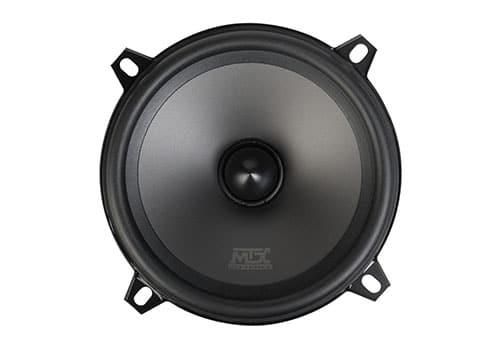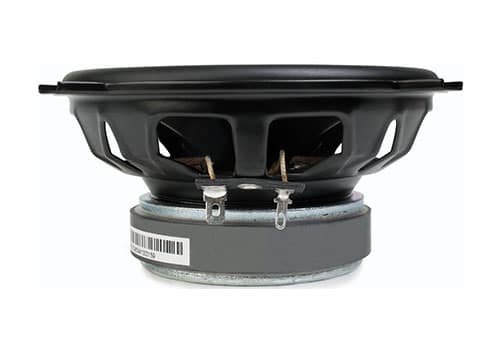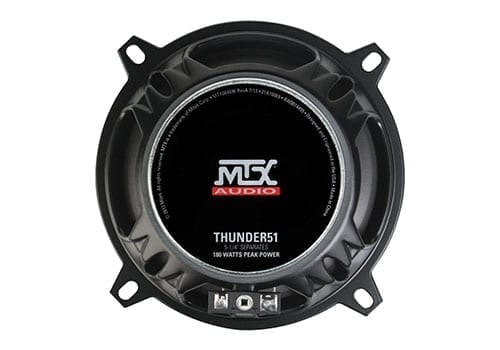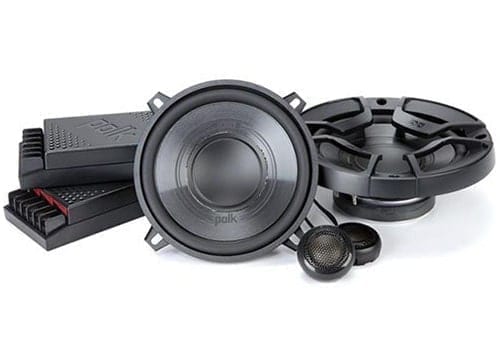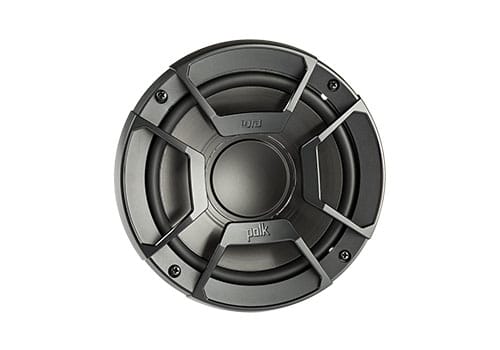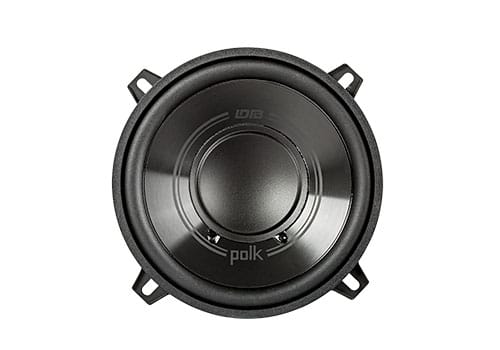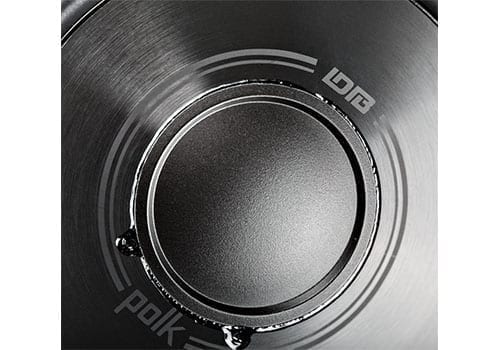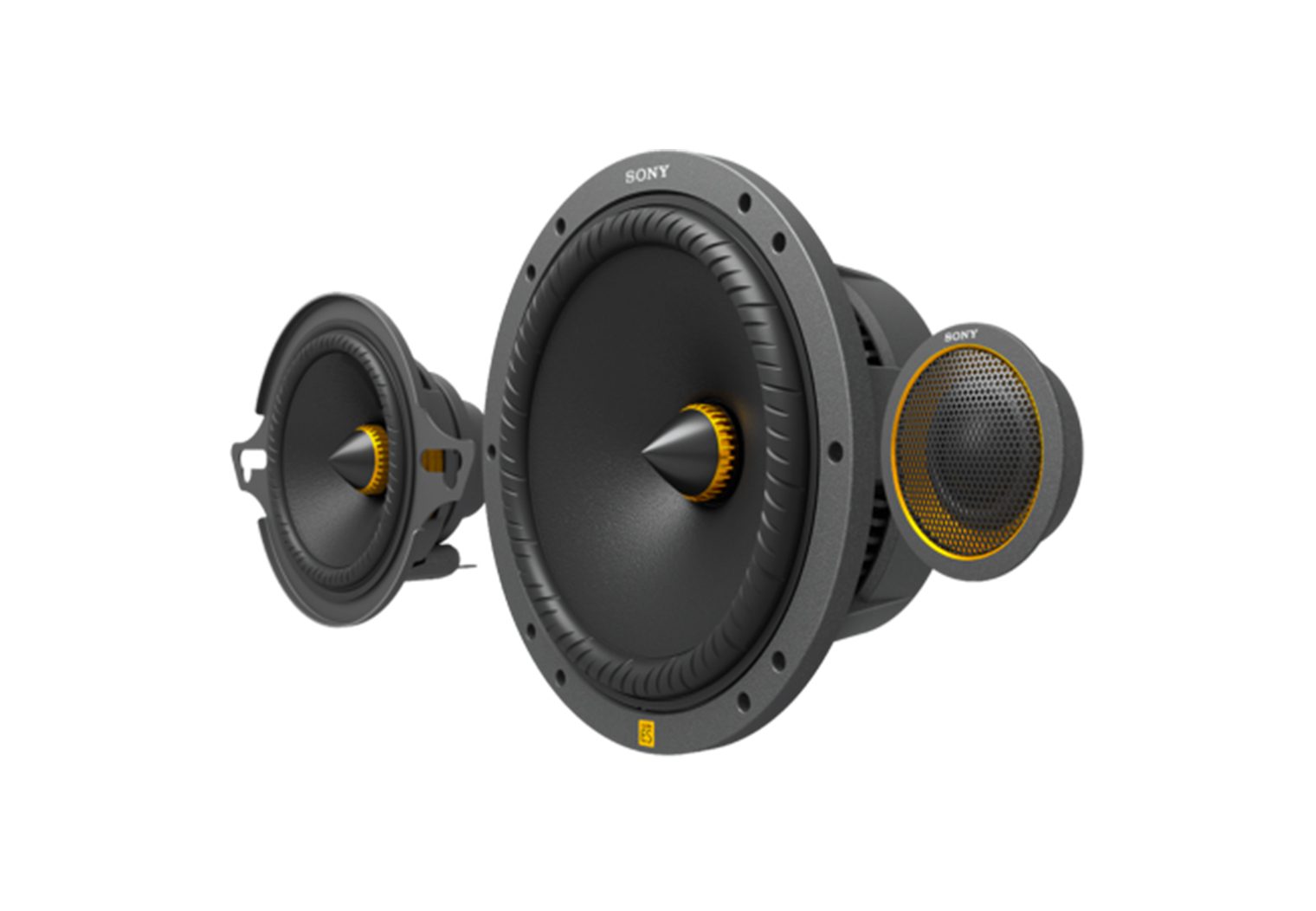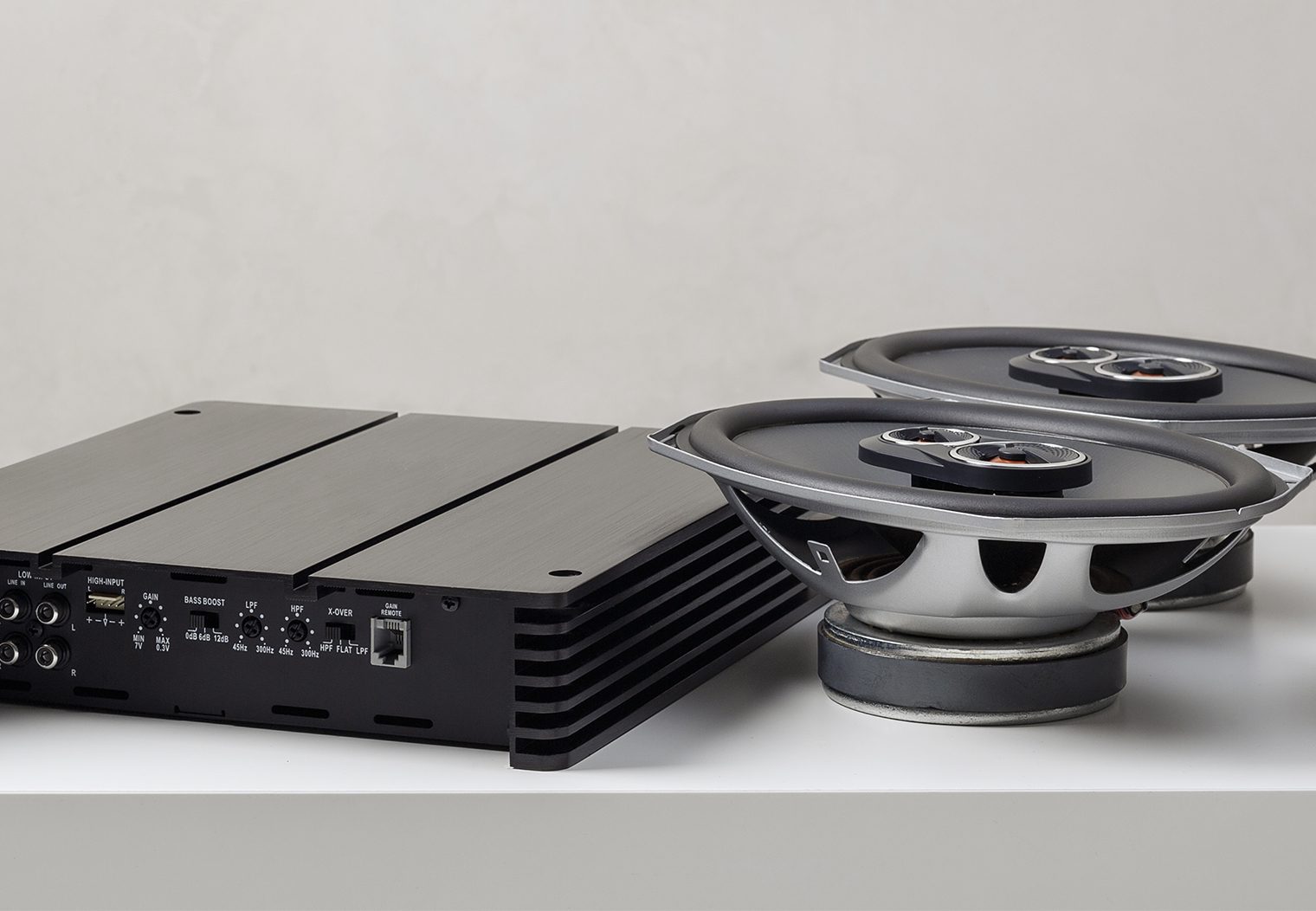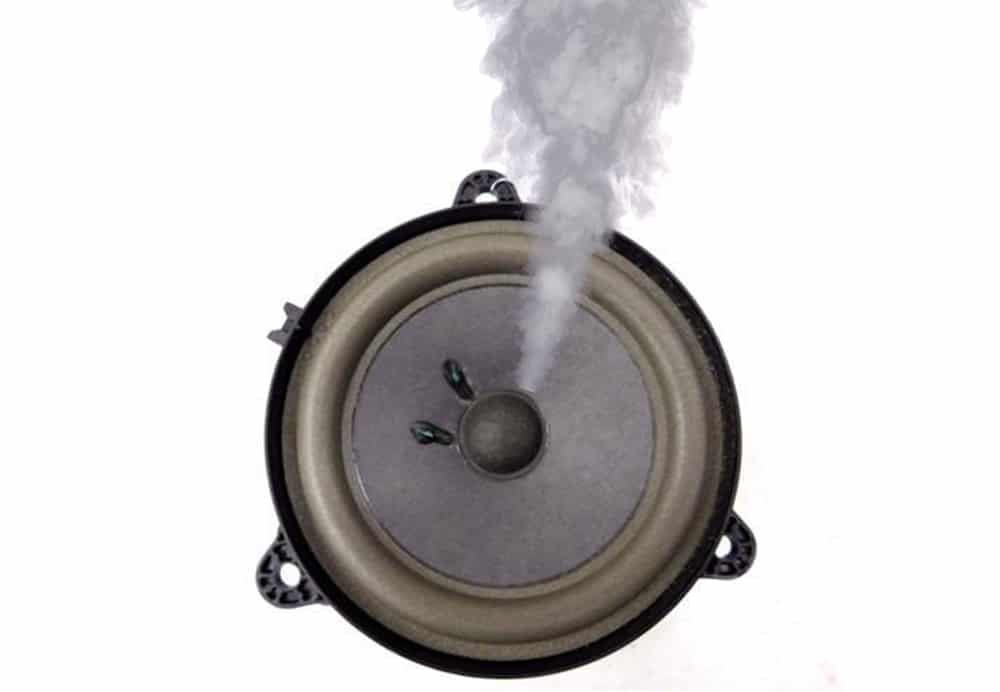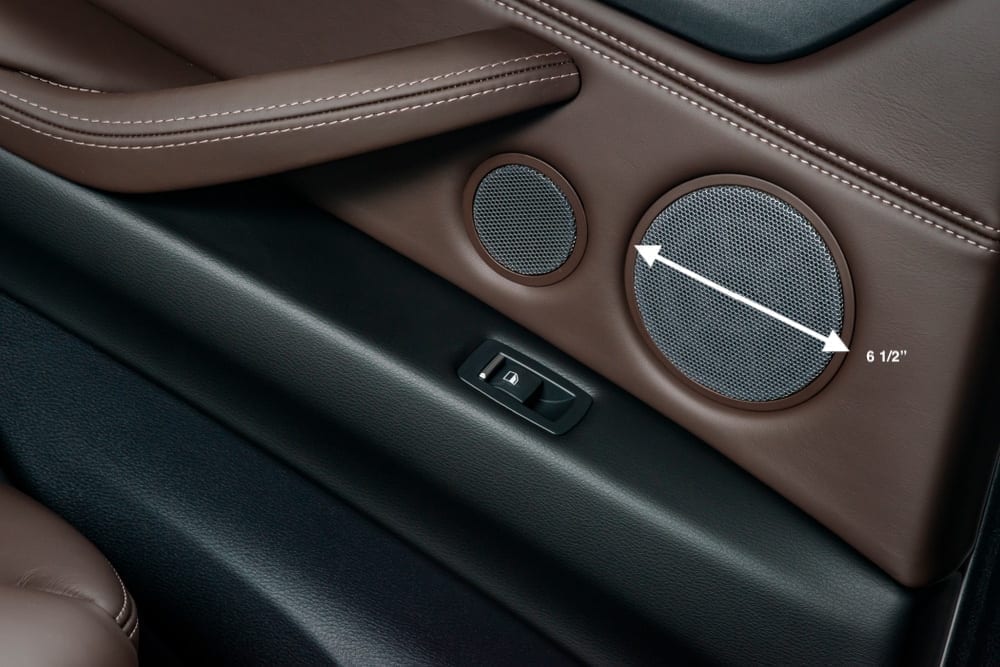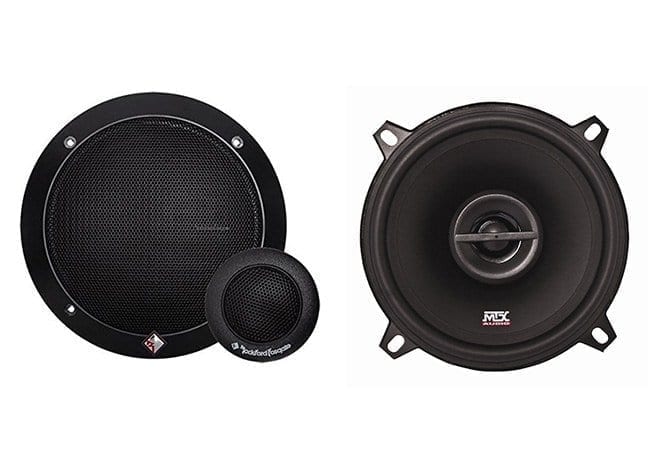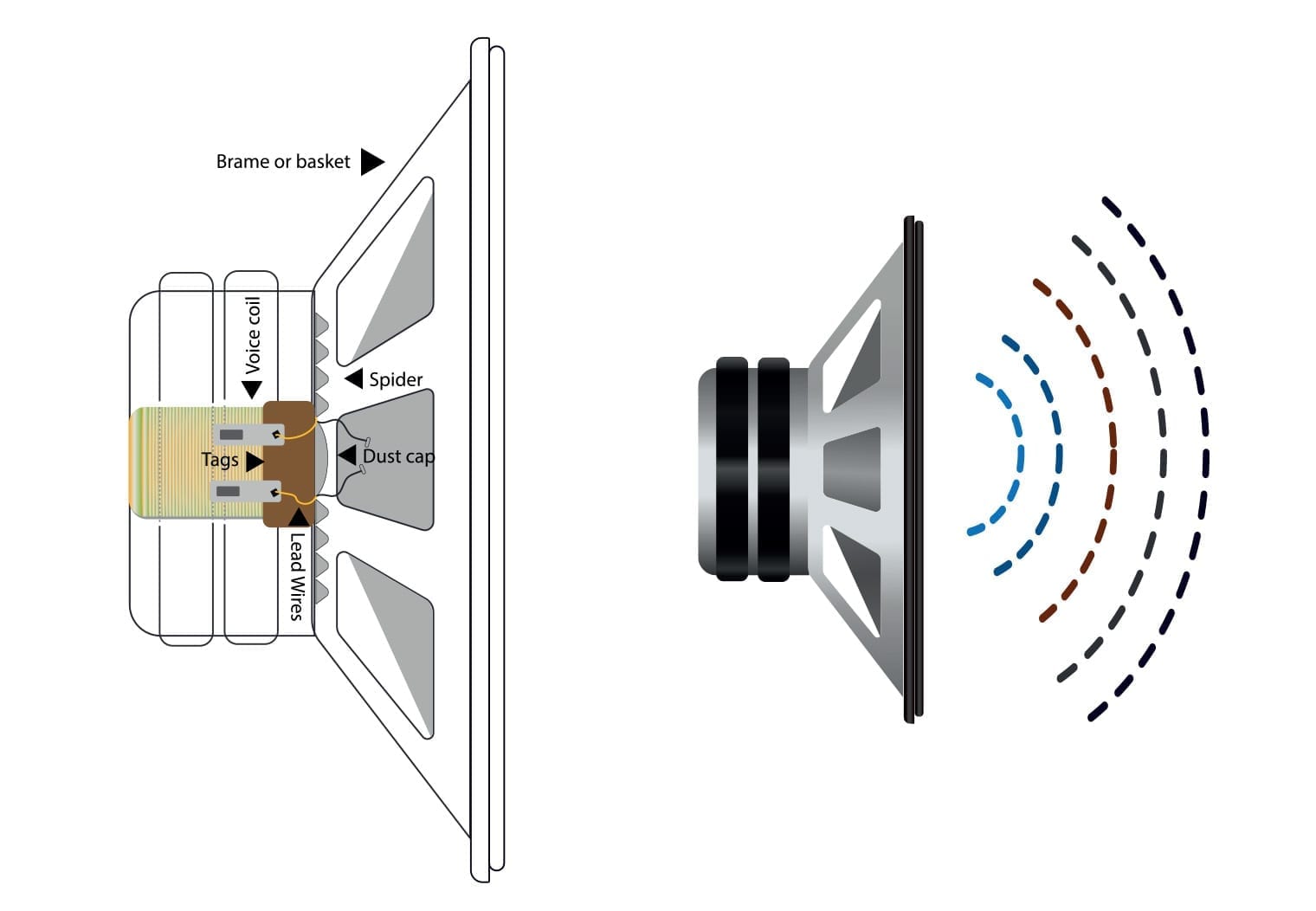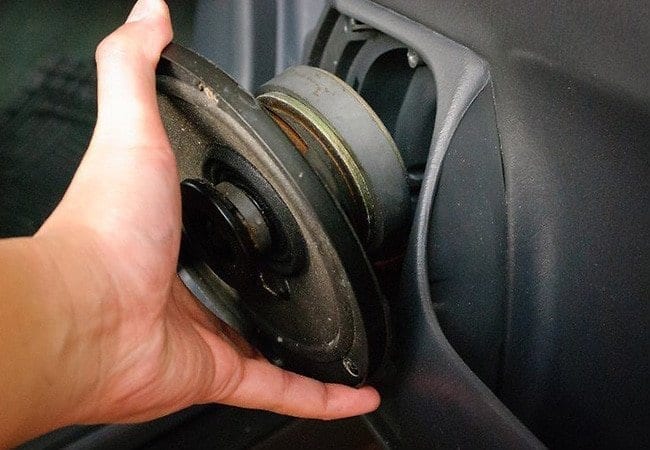Best 5.25″ Component Car Speakers
- By: Kameron Scott
- Published: June 10, 2016
- Updated: November 11, 2025
Tested by us
How we evaluate: We install and listen to the same size speakers featured on this page—both coaxials and component sets—in real vehicles. Rather than publish lab graphs, we focus on what matters day-to-day: fitment, sound quality at normal and loud volumes, and whether the speakers perform well on factory power or with a modest amplifier.
- Fit & install: Check mounting depth and cutout diameter, tweeter/grille protrusion under factory grilles, and whether adapter rings or simple spacers are required for a clean, rattle-free fit.
- System matching: Listen on a stock head unit and with a sensible amp upgrade to confirm which picks work great with no amp—and which truly benefit from added power.
- Listening tests: Use consistent reference tracks across genres to judge midrange clarity (vocals, guitars), tweeter smoothness (no harshness), and bass fullness appropriate for the SIZE format.
- Build & materials: Note cone and surround materials, crossover quality (for components), terminal design, and included hardware that simplifies installation and improves reliability.
- Sensitivity & impedance sanity-check: Verify rated sensitivity and impedance against documentation so buyers avoid mismatches with common head units and entry-level amps.
- Everyday reliability: Track long-term feedback (rattles, failures, warranty support) and flag models that consistently hold up well in daily use.
Disclosure: Some speakers are manufacturer samples; many we purchase. Brands don’t review or approve our picks, and recommendations are based on our hands-on installs and listening.
In this article: I've updated my top picks for the best 5 1/4″ (5.25″) component car speakers with current specs, real-life install notes, and why each set still earns its spot. I’ll also point you to fitment tools, installation guides, and related reviews across CarAudioNow so you can make the right choice the first time. And be sure to take a look at my parent guide with my top pick car speakers of all sizes.
Who this guide is for: If your vehicle uses 5.25″ front or rear speakers from the factory (common in many compact cars and older European models) or you’re working with a tight door/dash cavity where a 6.5″ won’t fit without fabrication, this guide is for you. Not sure what size you have? Use my interactive Car Speaker Size Chart to confirm fitment.
5.25″ vs 6.5″ vs 6×9″: Quick pros & cons from my experience
- 5.25″: Best when space is limited. Excellent imaging and mid detail with the right set/crossover. Trade-off is mid-bass output vs larger sizes.
- 6.5″: The “sweet spot” for most cars—more cone area and mid-bass, broader model selection. Often needs light adapter/fabrication in vehicles that came with 5.25″.
- 6×9″: Maximum cone area and output in factory 6×9″ locations; less common up front for component sets without fabrication.
Power & tuning tip: Most of the picks below scale up nicely with a clean external amp. If you’re staying on head-unit power, prioritize higher sensitivity and conservative RMS demands. My latest Best Car Amplifiers will help you match power, and this walkthrough on installing car speakers covers mounting, deadening and tweeter placement. New to components? Start with Understanding Component Speakers and Components vs Coaxials.
Best Overall 5 1/4″ Component Car Speaker
Infinity Reference 5030CX
Latest Prices
We test gear and may earn a commission. Buy now clicks are how we make money and support the time we spend making content. This doesn’t affect our picks.
Infinity Reference 5030CX Quick Review
I first chose the 5030CX years ago because it punches way above its price in real cars, not just on paper. Infinity’s Plus One™ woofer cone gives these 5.25″ mids more cone area than most competitors, which helps with lower-mid warmth that 5.25″ sets often lack. The 3-ohm voice coil is designed to “wake up” on factory wiring, but these really come alive on a clean external amplifier. The 0.75″ edge-driven textile dome tweeters are smooth, not splashy, and the simple level switch lets you dial brightness for on-axis or off-axis installs.
Are there higher-end performers on this list? Yes. But for the widest range of vehicles and budgets, the 5030CX continues to be the most balanced, reliable recommendation in the 5.25″ category.
At-a-Glance Specs
| Model | Infinity Reference 5030CX |
|---|---|
| Type | 5.25″ 2-way components |
| RMS / Peak | 65W / 195W |
| Sensitivity | 93 dB |
| Impedance | 3 Ω |
| Freq. Response | 67–21,000 Hz |
| Top-Mount Depth | 1-15/16″ |
| Tweeter | 0.75″ edge-driven textile dome |
| Crossovers | External; tweeter level adjust |
| Notes | Plus One™ cone = extra surface area |
Reasons to Buy
- Excellent “drop-in” upgrade for factory 5.25″ locations
- Forgiving on head-unit power yet scales with an amp
- Clean, fatigue-free highs with simple level tuning
Reasons Not to Buy
- Limited low-bass vs larger sizes—add a sub or consider 6.5″
- Best results with an external amp and deadening
- Grilles not included
Best 5 1/4″ Speaker if Money Were No Object
Focal Performance PS 130 FE
Latest Prices
Focal PS 130 FE Quick Review
If price isn’t the limiter and you want reference-grade clarity from a compact footprint, this set is special. The flax cone adds warmth and texture without smearing transients, and Focal’s TAM tweeter has a wider, more forgiving dispersion than many inverted domes I’ve tuned. That’s huge when your sail panel or A-pillar forces an off-axis mount.
The passive networks are cleanly voiced, hardware is premium, and build tolerances are tight. This is the 5.25″ set I choose when I’m chasing stage height and micro-detail in cars that can’t swallow a 6.5″ mid.
| Model | Focal PS 130 FE |
|---|---|
| Type | 5.25″ 2-way components |
| RMS / Peak | 60W / 120W |
| Sensitivity | 90.5 dB |
| Impedance | 4 Ω |
| Freq. Response | 75–28,000 Hz |
| Top-Mount Depth | 2-3/8″ |
| Tweeter | TAM aluminum/magnesium inverted dome |
| Crossovers | External |
| Notes | Flax EVO cone with TMD surround |
Reasons to Buy
- Natural, rich tonality with superb imaging
- Wide tweeter dispersion simplifies placement
- Premium hardware and finish
- Low distortion at higher volumes
Reasons Not to Buy
- Expensive vs. mainstream options
- Reveals upstream issues—plan on amp/DSP and proper deadening
Best Factory Upgrade 5 1/4″ Speaker
Hertz CK 130
Latest Prices
Key Features
- 2-way 5.25″ components with 1″ Tetolon® dome tweeters & matched crossovers
- Frequency response: 65 – 22.5k Hz
- Power handling: 70W RMS / 210W Peak
- Klippel-optimized motor for low distortion
- Mica-injected paper cone for lively midrange
Hertz CK 130 Quick Review
As a direct factory upgrade, the CK 130 hits the sweet spot: detailed tweeters that aren’t harsh, lively mids, and crossover voicing that works well even when you can’t aim the tweeters perfectly. Hertz’s Cento series benefits from Klippel QC and it shows in the consistency set to set. Pair these with moderate power and basic door deadening and you’ll hear a night-and-day jump over stock.
| Model | Hertz CK 130 |
|---|---|
| Type | 5.25″ 2-way components |
| RMS / Peak | 70W / 210W |
| Sensitivity | ~92.5 dB |
| Impedance | 4 Ω |
| Freq. Response | 65–22,500 Hz |
| Top-Mount Depth | 2.0″ |
| Tweeter | 1″ Tetolon® dome |
| Crossovers | External; ~2.5 kHz @ 12 dB/oct |
| Notes | Mica-injected paper woofer (Cento series) |
Reasons to Buy
- Instant midrange clarity upgrade over factory speakers
- Refined, adjustable tweeter response
- Great match for modest 4-channel amps
Reasons Not to Buy
- Materials aren’t exotic at this price point
- Less low-bass weight than larger 6.5″/6×9″ sets
Best Convertible 5 1/4″ Speaker
JL Audio C3-525
Latest Prices
JL Audio C3-525 Quick Review
This is the “have it both ways” pick. If your install starts as a coaxial but you plan to relocate the tweeter later, C3 makes that easy without replacing the whole set. The voicing is classic JL: smooth tweeter, solid power handling, and crossovers that play nicely with a wide range of amps. For help choosing between layouts, see my quick guide on components vs coaxials.
| Model | JL Audio C3-525 |
|---|---|
| Type | 5.25″ convertible 2-way (component or coax) |
| RMS / Peak | 75W / 225W |
| Sensitivity | 88.5 dB (1W/1m) / 91.5 dB (2.83V) |
| Impedance | 4 Ω |
| Freq. Response | 53–25,000 Hz |
| Top-Mount Depth | 2-1/4″ |
| Tweeter | 1.2″ silk dome |
| Crossovers | External; presence contour |
| Notes | Includes mounts for separate/coax use |
Reasons to Buy
- True convertible design = flexible install path
- Broad frequency range with composed highs
- Built to handle real power
Reasons Not to Buy
- Pricier than non-convertible sets
- External amp strongly recommended to realize full potential
- Coaxial/convertible interface is a moving part—handle with care during installs
Best Budget Pick 5 1/4″ Speaker
Rockford Fosgate R152-S
Latest Prices
Rockford Fosgate 152-S Quick Review
Budget components rarely impress, but Rockford’s Prime set is a legit upgrade from stock for very little money. Expect warm, listenable mids and easy installation thanks to inline crossovers. Sensitivity is on the lower side, so you’ll get the best results on a modest 4-channel amp—but they’ll still outperform factory drivers on head-unit power. If you’re planning a bigger system down the road, bookmark my amp-choosing guide for clean, affordable power options.
| Model | Rockford Fosgate R152-S |
|---|---|
| Type | 5.25″ 2-way components |
| RMS / Peak | 40W / 80W |
| Sensitivity | 85 dB |
| Impedance | 4 Ω |
| Freq. Response | 58–20,000 Hz |
| Top-Mount Depth | 1-7/8″ |
| Tweeter | 1″ Mylar balanced dome |
| Crossovers | Inline |
| Notes | Grilles included; budget-friendly |
Reasons to Buy
- Very affordable path into components
- Noticeable clarity jump over OEM speakers
- Simple wiring with inline crossovers
Reasons Not to Buy
- Foam surrounds aren’t as durable long-term as rubber
- Lower sensitivity—benefits from amplification
Best 5 1/4″ Speaker for Bass
MTX THUNDER51
Latest Prices
MTX Thunder51 Quick Review
If you prioritize low-end presence from a 5.25″, MTX’s Thunder gets you closest. The polypropylene cone and rubber surround handle abuse and weather swings well, and the tuning leans toward a meatier mid-bass without turning the tweeter splashy. Give these a solid 50–100W from a clean amp and some door deadening and they thump respectably for their size.
| Model | MTX THUNDER51 |
|---|---|
| Type | 5.25″ 2-way components |
| RMS / Peak | 90W / 180W |
| Sensitivity | 90 dB |
| Impedance | 4 Ω |
| Freq. Response | 51–20,000 Hz |
| Top-Mount Depth | 2.19″ (≈2-3/16″) |
| Tweeter | ~1-3/16″ silk dome |
| Crossovers | External; adjustable tweeter level |
| Notes | Polypropylene woofer; rubber surround |
Reasons to Buy
- Above-average mid-bass for a 5.25″
- Durable materials and solid power handling
Reasons Not to Buy
- Larger passive crossovers can complicate tight installs
- Needs proper amplification to shine
Best All-Weather 5.25″ Component Car Speaker
Polk Audio DB5252
Latest Prices
Polk Audio DB5252 Quick Review
Great for Jeeps, Broncos, UTVs, and convertibles that see weather, Polk’s DB5252 is my go-to 5.25″ component pick. The IP55 rating and corrosion-resistant hardware hold up where typical car-only sets don’t. Sonically, they’re lively and clean with a bit of top-end energy that cuts through wind and road noise. If you’re shopping a full outdoor system though, check out my marine speaker picks for larger sizes too.
| Model | Polk Audio DB5252 |
|---|---|
| Type | 5.25″ 2-way components (marine certified) |
| RMS / Peak | 100W / 300W |
| Sensitivity | 91 dB |
| Impedance | 4 Ω |
| Freq. Response | 50–23,000 Hz |
| Top-Mount Depth | 1.74″ (≈1-3/4″) |
| Tweeter | 0.75″ silk/polymer dome |
| Crossovers | External 2-way |
| Notes | Weather-ready build; corrosion-resistant hardware |
Reasons to Buy
- Weather-resistant build for harsh environments
- Strong output on proper power; clean crossover
Reasons Not to Buy
- Highs can get bright in reflective cabins—use tweeter level padding
Shopping across sizes or still deciding? Compare these picks with the 5.25″ winners on my parent guide: Best Car Speakers (Tested). And if you plan to bi-amp or go three-way later, this walkthrough on bi-amping crossovers is a good next step.
Other Articles We Think You Should Review About Car Speakers
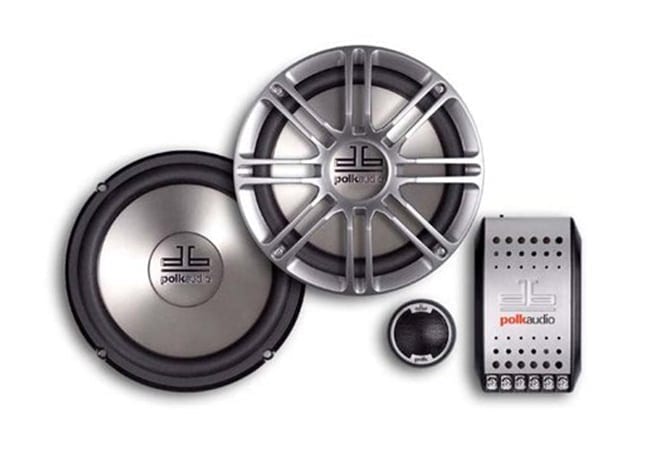
Why Trust Our Opinion on Car Speakers?
CarAudioNow is an award winning automotive blog, founded and built from the ground up by car enthusiasts over a decade ago. Between our editor, Kameron, and a few selected qualified writers, we’ve installed and tested a wide variety of speakers in cars, boats, golf carts – you name it. We know our speakers, how they should sound and perform and what’s a good value for your dollar. We get our hands on every product that we test in person – many of which are purchased and some provided by a manufacturer. It’s a combination of these tests and extensive research that lead us to our recommendations. And we’re frequently testing new speakers for our lists.
CarAudioNow and its writers don’t use AI to throw regurgitated information about a few car speakers on a list and say they’re “the best” either. We’re focused on providing meaningful lists, with accurate and useful information that will help you make an informed decision on a product. And we do this because we genuinely enjoy or highly regard the stuff we add to our lists. Our readers and our reputation are both more important to us than a quick buck or the top rank on Google – although both of those would be nice! Read more about how we choose our top lists here.


